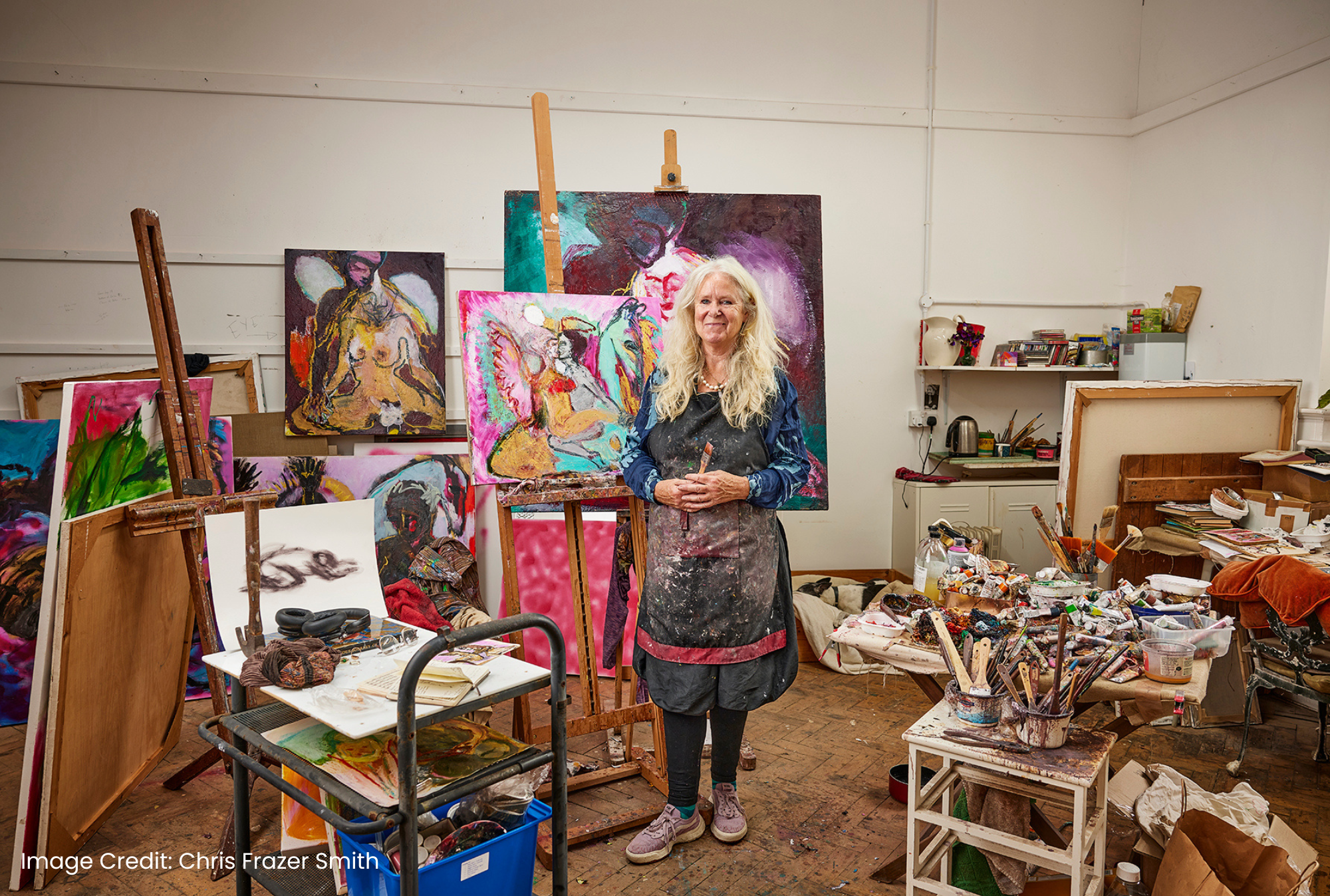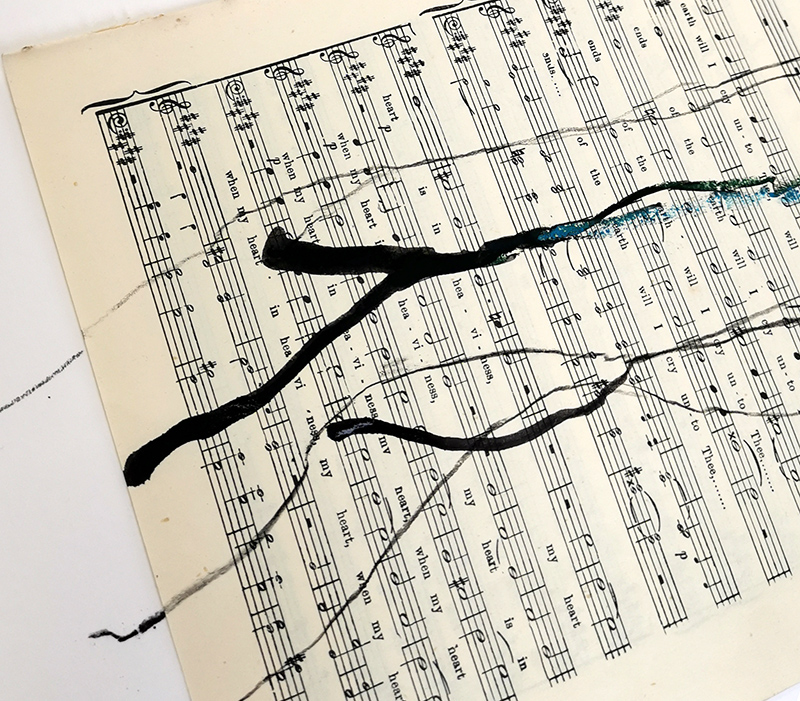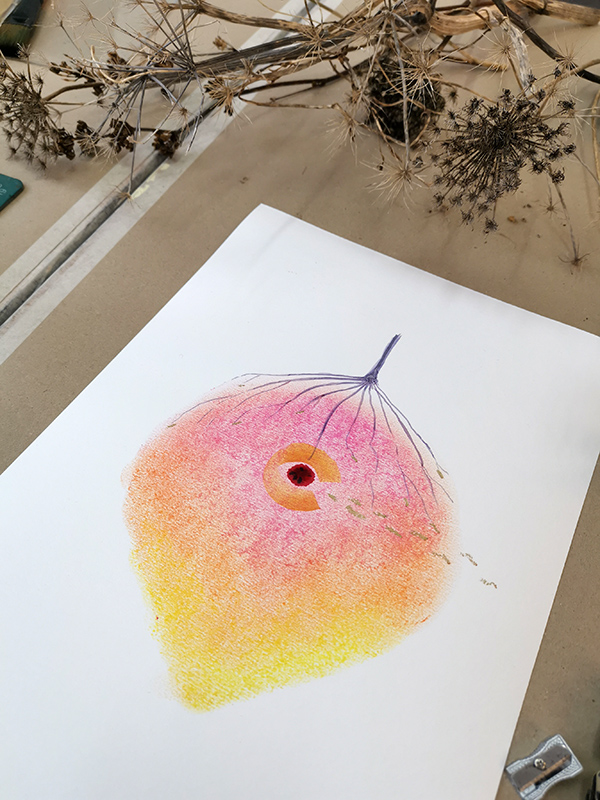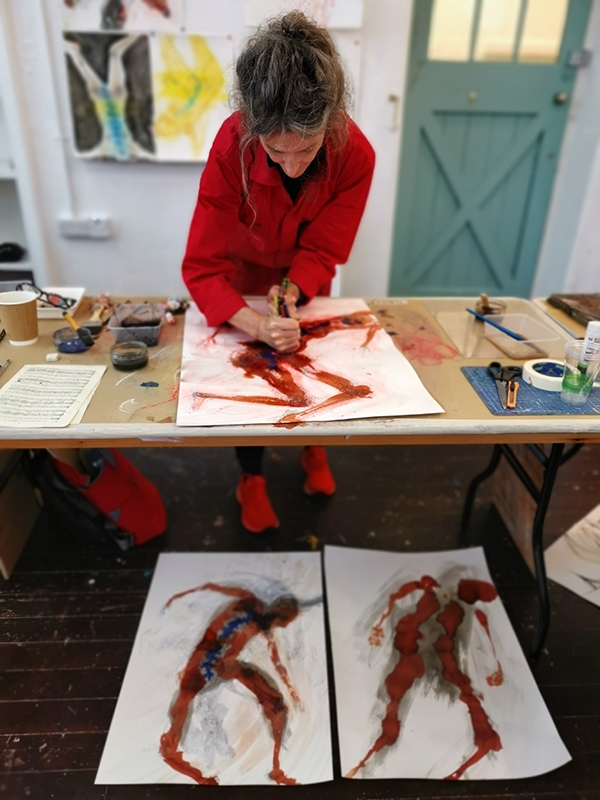"What is drawing?" Kate Walters asks us as we gather around a table laden with art books.
This seemingly straightforward question, we quickly discover, is an invitation to dive into all manner of creative and philosophical responses. The group happily oblige, discussing the many layers that encompass what drawing is and can be beyond making marks on a surface.

"Drawing can be a means of expressing thought, emotion or something more tangible, like an object or a scene" suggests one participant. Another ponders whether drawing is a means by which we may attempt to understand ourselves and the world around us. It can be a way of capturing or evoking a snippet of time; an exploration of thought, space or emotion; a form of visual poetry or healing. Another rather beautiful suggestion is that drawing doesn’t have to be a mechanical act with an obvious implement - she could draw with a tractor, or with smoke.
Now receptive to the many possibilities for our drawing, we settle at our desks, eager to begin. This first morning we will explore how mark-making can be reflective of our connection to different kinds of music and materials as much as our emotions, our bodies, or our larger sense of self. We dip charcoal in ink, close our eyes, and draw with our non-dominant hand on each exhale.

Drawing well, Kate believes, requires a fully-embodied approach:
"Become aware of how you allow every muscle, every fibre of you to become involved in making a mark. If you feel heavy, you will draw with a heavy hand, and your drawings will be heavy. Be aware of the quality of your breath, and echo that quality in the marks you make."
The music changes and Kate begins to guide our focus to different areas of our body. The outcome of each round is always a surprise. Every drawing is completely unique – sometimes expressive and energetic, other times contained and delicate.
After lunch we have a different focus: We each choose a lily stem and spend a few moments appreciating the many facets of it before attempting to draw it.
"The way we look at things in our culture is often about pursuit," says Kate.
"This exercise is about being open to receive. It is about invitation and response: your drawing then becomes more nuanced, more respectful and more of a conversation."

Kate’s own work is rooted in a profound connection with wild places as well as an exploration of her inner world and life experiences.
"I work with my obsessions," she confides, as she shares her precious sketchbooks with us during our afternoon break. As 'homework' she asks us to spend some time thinking on a theme that we are passionate about, and are prepared to explore as a sequence of drawings.
"The most powerful artworks," she insists "are ones where the artist is telling a story from their own experience. I want to light a fire in you. I want you to be curious, to go to your edges – whether that’s as an emotional response, a way of working or responding, or your use of materials – and go beyond."
There is an atmosphere of deep focus the following day, as each one of us gets to grips with our individual topics. Some work on large pieces of paper with dynamic, free-flowing marks; others work far smaller, choosing to work in old books that had been destined for pulp, now resurrected and laced with new stories, miniature paintings and drawings.

At our disposal are a vibrant range of materials– everything from oil and chalk pastels, to acrylic, watercolours, pencils, charcoal and inks handmade from oak galls. This is the kind of ink historically used to pen the Magna Carta as well as by masters such as Leonardo and Rembrandt.
"Find your personal language by experimenting with all sorts of different materials," enthuses Kate. "Keep exploring, keep practicing. When your unique voice eventually comes through it is like a miracle, a revelation."
Kate is on hand, inviting us to talk through our process, and guides us to the work of other artists featured in the eclectic personal library she has brought to inspire us.
"When you’re deeply in the creative practice - in what is called ‘flow state’ - you relinquish control, you allow things to happen." She shows us a replica of one of Picasso’s sketchbooks as an example, enthusing about his economy of line. "That’s the thing about drawing: you just need a few marks, but the right marks. There’s such truth and purity in these drawings. That’s what I’m trying to teach here."

It's rare to be able to experiment in this way within a group, free from judgment, with a remit entirely open to explore whatever themes are personal to us. As a result the work is powerful and tender; challenging and beautiful. There’s intention and feeling in every line.
Encouraged to work in our own way, each of us produces a body of drawings that have stretched or challenged us in some way. Personally, the work I have produced makes for rather uncomfortable viewing. It is gritty, difficult and brutally honest. It is a reminder to self that not all powerful art is pretty, and that there is great value in creating work that speaks from the heart, even if the value is simply in the process of creating it.

As Kate says, the more you make work that is deeply creative the more you will feel nourished and fed. If you hit on something that’s weighty and emotionally draining, that is part of it too:
"This is when you realise that this is part of your soul’s work, and it is such an important thing to do for yourself. There’s not much that is more important, except of course love and being kind."
As we gather at the end of the course, it's clear that we have a lot to take away from these two days.
This was a creative immersion into oneself. It is drawing with soul.
- Kari Herbert
Click here to find out more about Experimental Drawing.